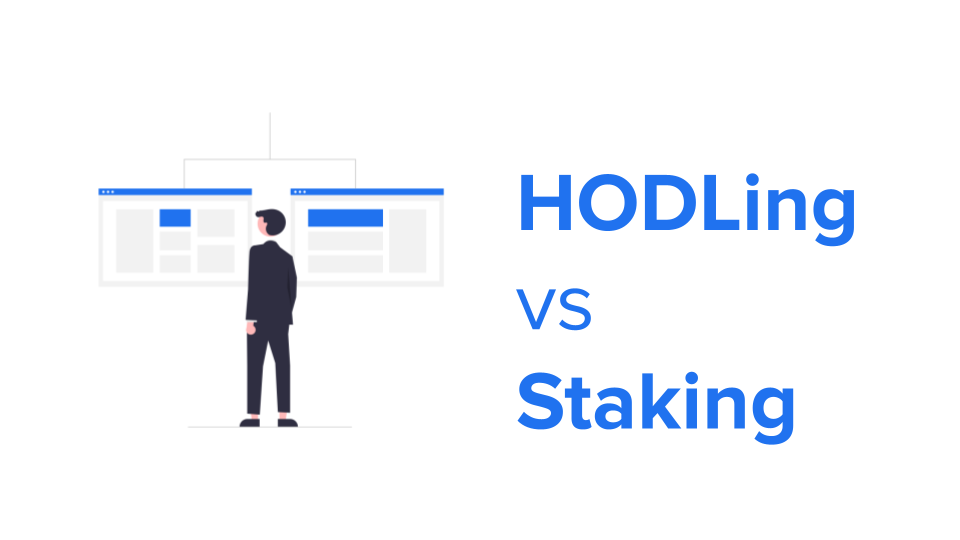A Brief History of HODLing and Staking
Both Hodling and Staking are different strategies which include the process of retaining crypto for a longer period. As the crypto economy scales, their applications expand into the populous, the more crypto transactions are made and the more utility a token provides, opportunities to earn increase. Let us understand what the strategies of Hodling and Staking bring to the table.
What is HODLing?
Hodling is the strategy of holding crypto and not using or selling it for a long time. This simple strategy is powerful assuming that the value of the crypto assets grows with time. The term “Hodl” originated from a typographical mistake by a user named GameKyuubi in the crypto forum Bitcointalk in December 2013. It was a mistaken term for “hold”. But the term stuck and got propagated like a meme.
For example, a person hodling some Bitcoin for the past 10 years would see a rise in their portfolio of around 80 times. Bitcoin, since its inception, has been one of the best-performing assets globally.
What is Staking?
Staking is required for cryptos using Proof of Stake (PoS), Delegated Proof of Stake (DPoS) and Proof of Authority (PoA) consensus mechanisms. Staking is submitting your crypto for the validation process and earning interest and block rewards in return.
The crypto staked is blocked for transaction validation in the network. When compared to Hodling, staking is often done for a shorter period.
HODLing vs Staking: Key Differences
Both these provide token holders with a significant return over time. The results depend on the different ways they achieve their conclusion. Both staking and hodling depend on the scalability of a token’s economy. Here are some of the key differences.
- Hodling does not increase the number of tokens a person is holding. Staking, apart from blocking the tokens, also rewards the user for validation and other purposes the tokens are staked for. So, the number of tokens increases in staking.
- Hodling retains the dynamism of a token. As the tokens are not in use and are kept aside, the amount of utility and transactions are hindered. Staking on the other hand is done for transaction validation and others. Contrary to Hodling, staking enhances the dynamism of the token.
- Hodling is majorly impactful for tokens deflationary in nature. Hodling tokens belonging to deflationary crypto like Bitcoin over a significantly longer period give significant returns. Staking usually occurs for a shorter time. The tokens which are comparatively more inflationary give returns through staking for a shorter period. People usually stake for a shorter period and earn through the rewards.
Pros and Cons of HODLing vs Staking for Long-Term Investment
Hodling
Hodling for a longer period works wonders when the price and demand of the token grows. But if the demand and the price of the token go down with time, it can lead to losses.
Staking
Staking for a longer period means you’ll earn more rewards over time. If the value of the token rises, the profits soar as well. If the price of the token falls with time, it can lead to losses just as hodling but the rewards certainly give a breather.
Read more: What is Crypto Staking
Pros and cons of HODLing vs Staking for Short-Term Investment
Hodling
Hodling for a short period can give good returns if the token is in trend and prices are shooting up. This however dwarfs in front of the profits gained over a longer time. However if the prices of the tokens do not stand the test of time, short-term investments can lower the risks of significant losses.
Staking
Staking for a shorter period will also give smaller profits when compared to long-term investments. Both the profits from the rise in token price as well as rewards are relatively minuscule.
Conclusion
Hodling and staking are two strategies to make a profit from holding your tokens for a sustained period. Both have their advantages and risks involved. Hodling gives you significant returns only when the token price rises with time. But as staking rewards with new tokens, rising token prices are not the only factors of profitability. It is important to note that all the earnings and chances of profitability are market-dependent and thus, subject to market risks.
Read more: Crypto Trading Strategies
We are not financial advisors and we suggest researching tokens before making any related investment decisions.
If you found this blog to be useful, do share it with other like-minded crypto enthusiasts. Click on the button below to begin your crypto trading journey using ZebPay.


